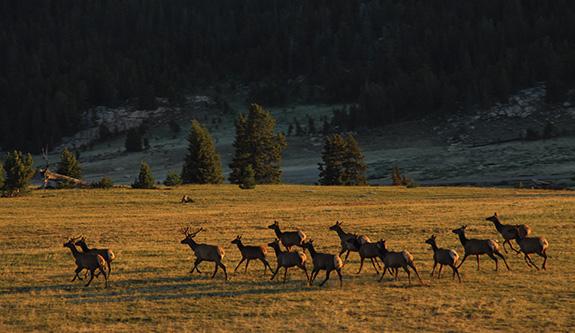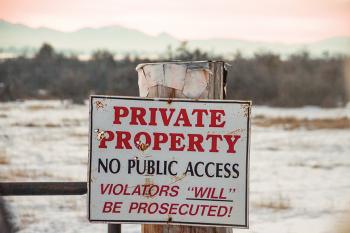More Elk, More Problems
Elk management goes to court.
Recently, the United Property Owners of Montana (UPOM) filed suit against the Department of Fish, Wildlife, and Parks (FWP) and Wildlife Commission (Commission) claiming (correctly) that elk are over population in some hunting districts, that excess elk are a hardship for farmers and ranchers, and that defendants have an obligation to reduce elk numbers in specific ways.
There is little argument on the first two points. There are a lot of elk in parts of the state, and their numbers are impacting some farms and ranches. The third is more problematic because of multiple complicating factors and lack of agreement about how to address the problem.
Plaintiffs protest defendants’ consideration of “social” factors in management decisions, although they lie at the heart of the matter. It is impossible to manage wildlife populations occupying a patchwork of public and private land with conflicting interests. When some landowners refuse to allow public hunting and mange elk herds to produce trophy bulls, those properties become havens for elk. Inevitably, some jump the fence and consume their neighbors’ crops.
Plaintiffs allege that policies favoring landowners who do allow public hunting violate private property rights by “forcing” others to allow public access. No FWP policy has ever forced landowners to grant access to private property. Actions have consequences, and if some landowners refuse to do their part in reducing elk numbers, it is unreasonable to expect the state to (somehow) do this for them. If UPOM’s primary concern is reducing crop depredation by elk, one must wonder why they sued to close established public access to thousands of acres of public land harboring elk.
Plaintiffs contend that defendants have exceeded their authority and that only the legislature is authorized to determine hunting regulations, defying both precedent and common sense. Virtually every state in the country delegates wildlife management to an appropriate department including professional biologists. Legislators, most of whom have no training in wildlife biology, are (or should be) too occupied with more important matters to be distracted by the details of wildlife management.
Plaintiffs allege that defendants are violating their statutory obligation to “manage” elk, despite lack of agreement about what “management” means. No policy requires FWP to eliminate elk from properties that don’t want them, or to make more tags available to private interests so they can benefit from what is a public resource according to the Montana constitution.
If UPOM’s primary concern is reducing crop depredation by elk, one must wonder why they sued to close established public access to thousands of acres of public land harboring elk.
One must wade through 30 pages of innuendo to find the real purpose of this action—eliminating limited drawing tag requirements in areas with elk populations above arbitrary objectives, providing more tags for outfitted hunters. This action would also increase the number of all hunters in areas where tags are now limited. More hunters with less private land to hunt will mean more hunters on public land, displacing elk onto the ranches now experiencing depredation.
Elk numbers are reduced by harvesting cows, not trophy bulls. The best approach to overpopulation is for more landowners to voluntarily allow more hunters to harvest more elk, including cows, which are of no interest to outfitted trophy hunters. The matter is now before the court, but all Montanans should pay attention whether or not they hunt elk.















